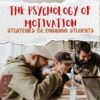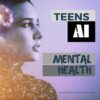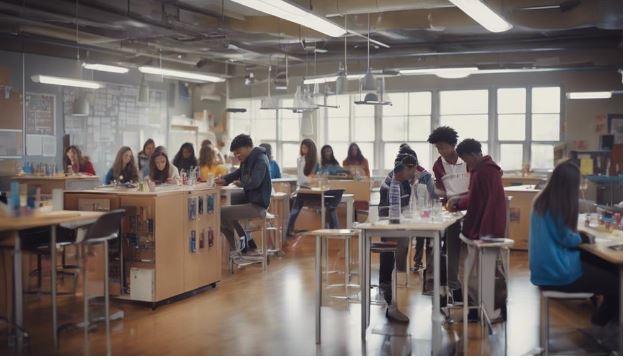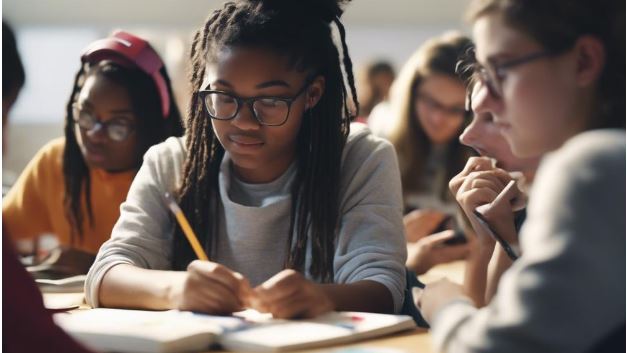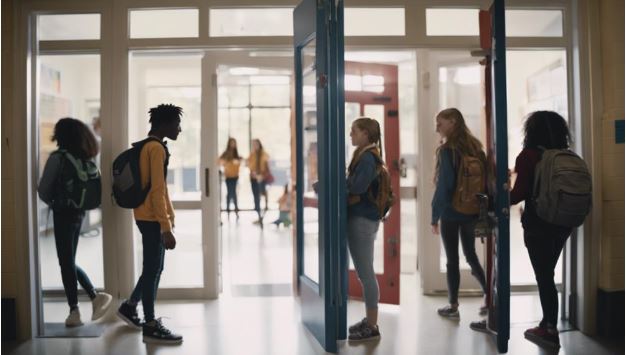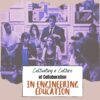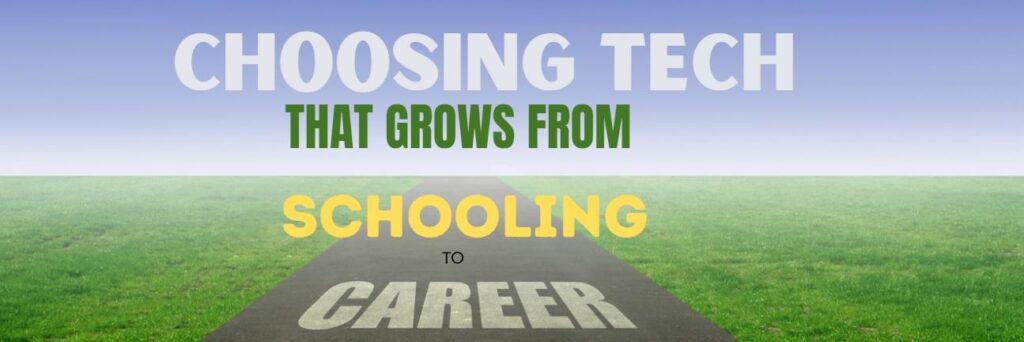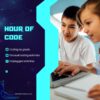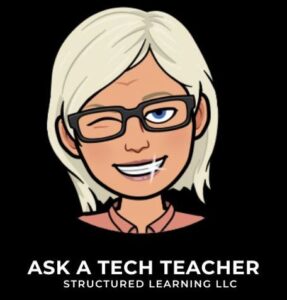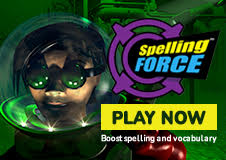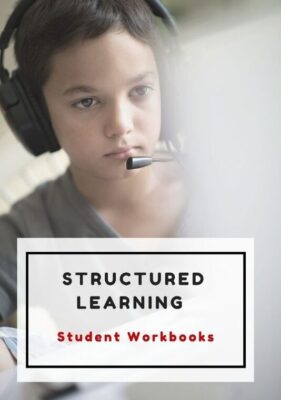Category: High School
The psychology of motivation: Strategies for engaging students
The psychology of motivation: Strategies for engaging students
Motivation plays a role not only in people’s choice to get involved in their goals but also in their behavior, persistence, and, ultimately, success. It is imperative for educators to be aware of the essence of motivation in education in order to create a stimulating environment where students can learn and develop. Through understanding motivation, educators will discover various sophisticated techniques to attract attention and instill a love for learning among students for life.
What does motivation entail?
Motivation is a phenomenon built on the idea of the action of inside and outside factors that together influence an individual to act in the achievement of his/her aims. Experts in psychology have comprehensively analyzed motivation. As a result, they have presented different theories and components which shape the way humans behave. A learner can be driven by two major types of motivation, the extrinsic and intrinsic types, each with its unique characteristics and ramifications on the learning process. (more…)
Share this:
- Click to share on Facebook (Opens in new window) Facebook
- Click to share on X (Opens in new window) X
- Click to share on LinkedIn (Opens in new window) LinkedIn
- Click to share on Pinterest (Opens in new window) Pinterest
- Click to share on Telegram (Opens in new window) Telegram
- Click to email a link to a friend (Opens in new window) Email
- More
Most Teens Think AI Won’t Hurt Their Mental Health; Teachers Disagree
Generative AI is an exploding influence in education with lots of potential but unknown outcomes. Most people focus on its impact on school research, lesson plans–that sort–but another piece isn’t considered often enough: its impact on student mental health. This next article from but we’ll do in this article from Education Week does
Educators, teens differ on AI’s mental health effects
Teens and educators hold divergent views on its mental health effects of AI, with educators expressing more concern about negative impacts, including cyberbullying and the ability of algorithms to create addictive virtual worlds. Meanwhile, students are more optimistic about AI’s potential benefits.
Full Story: Education Week (3/25) (more…)
Share this:
- Click to share on Facebook (Opens in new window) Facebook
- Click to share on X (Opens in new window) X
- Click to share on LinkedIn (Opens in new window) LinkedIn
- Click to share on Pinterest (Opens in new window) Pinterest
- Click to share on Telegram (Opens in new window) Telegram
- Click to email a link to a friend (Opens in new window) Email
- More
Engaging All Learners: Expanding High School Options for Success
High School collects a diverse group of students into a large learning community, but it also prepares teenagers for a future as variable as any we can imagine. How is it possible to accomplish that? The Ask a Tech Teacher team has some ideas on balancing varied learning styles with needs to provide students their best chance at success in college or career–whichever they choose:
Engaging All Learners: Expanding High School Options for Success
Think about Albert Einstein, who, despite his genius, struggled in traditional school settings. Today, as education leaders, you’re faced with an increasingly diverse student population, each with unique learning styles, abilities, and aspirations.
Yet, the one-size-fits-all model persists in many high schools. You might be wondering if there’s a better way to engage all learners. Could we expand high school options to guarantee every student’s success?
Let’s explore this, considering some innovative strategies and how they are transforming education as we understand it.
Understanding Different Learning Styles
Your journey to success begins with comprehending the different learning styles and how they impact your educational experience. You see, not everyone assimilates information the same way. Some students are visual learners, digesting information better when they see it in graphs, charts, and pictures. Others are auditory learners, absorbing information more efficiently when they hear it. Still others are kinesthetic learners, who understand better through physical activity or hands-on experience.
Recognizing your learning style isn’t just about understanding how you learn. It’s about maximizing your educational opportunities, tailoring your study habits to your unique style, and ensuring you’re able to absorb and retain information effectively.
You might find you’re not confined to one style. Many people are multimodal learners, integrating two or more styles. By understanding these varying styles, you’re able to adopt a more flexible approach to your education.
Understanding your learning style isn’t just beneficial, it’s crucial. It’s your key to revealing your full potential, optimizing your learning experience, and ensuring your journey to academic success is as efficient and enjoyable as possible.
The Limitations of Traditional High Schools
While understanding your learning style can greatly enhance your educational journey, it’s also worth examining the constraints that traditional high schools may impose on your learning process. These institutions typically adhere to a one-size-fits-all approach, offering a rigid curriculum that doesn’t necessarily cater to the diverse learning needs and styles of all students. You might find that the pace is too fast or too slow for you, or that the teaching methods don’t resonate with your style of learning.
Traditional high schools often prioritize rote learning and standardized testing, which can limit your ability to develop critical thinking and problem-solving skills. They also tend to focus heavily on academic achievement, often neglecting other important facets of education like social skills, emotional intelligence, and practical life skills.
In addition to traditional high schools, online schools in Arizona have emerged as an alternative education option, providing flexibility and personalized learning experiences for students. These virtual institutions offer a range of courses and programs tailored to individual learning styles and needs.
The Rise of Alternative Education Options
In response to these limitations, alternative education options have surged in popularity, offering more flexible and personalized approaches to learning. These alternatives, ranging from charter schools to homeschooling, provide opportunities to cater to individual learning styles and interests that aren’t always met in traditional high school settings.
You’ll find that charter schools, for instance, are publicly funded but independently run, offering unique educational philosophies or specialized curricula. They provide a choice for parents and students dissatisfied with their assigned public schools. Homeschooling, on the other hand, offers the utmost flexibility, allowing learning to be fully individualized and paced to a student’s specific needs.
Online and distance learning programs have also gained traction. These platforms often combine self-paced study with live, interactive instruction, balancing independence with support. Ultimately, vocational and technical education programs equip students with practical skills for direct entry into the workforce.
Keep in mind, however, that while these alternatives can offer flexibility and personalization, they also come with their own challenges. It’s important to weigh the benefits against potential drawbacks to determine the best fit for each learner’s educational journey.
The Role of Technology in Personalized Learning
Building on the trend of diverse educational approaches, we must also consider the significant impact that technology has on personalized learning. As an educator, you’re at the front lines of this digital revolution. Technology, when used correctly, can facilitate tailored instruction that addresses individual learning styles, aptitudes, and pace of learning.
Consider digital platforms that allow you to monitor student progress in real-time. You can identify areas of weakness and strength, adjust lesson plans accordingly, and provide immediate feedback. That’s personalized learning at its best.
Let’s not forget about the wealth of online resources available. Whether it’s an interactive math game or a virtual reality tour of the Colosseum, technology opens up new avenues of learning that were previously inaccessible. This makes education not just personalized, but also engaging and relevant.
However, it’s important to keep in mind that technology isn’t a magic solution. It’s a tool, and it’s only as effective as its use. You must be ready to adapt your teaching strategies, align the use of technology with learning objectives, and ensure equality in access. With careful consideration and planning, technology can indeed revolutionize personalized learning.
Vocational Education: A Viable Pathway
Paving the way for diverse career opportunities, vocational education offers a practical, skills-focused alternative to traditional academic paths. It’s not just about providing another choice; it’s about redefining the meaning of success in education and career planning.
Vocational education, with its emphasis on hands-on training and real-world application, can be a game-changer for you. It’s uniquely designed to bridge the gap between theoretical knowledge and practical skills. This approach can put you on a fast track to a fulfilling career, reducing the time and financial investment often associated with a traditional four-year degree.
Consider these compelling reasons why vocational education deserves your attention:
- It empowers you with job-specific skills, increasing employability.
- It allows for faster entry into the workforce.
- It promotes a learning-by-doing approach, reinforcing understanding.
- It offers a wide variety of career paths to pursue.
- It can lead to higher early-career salaries compared to some traditional degree holders.
Implementing Inclusive Education Policies
Shifting our focus to inclusive education policies, understanding how they’re key to ensuring that every student, regardless of their background or ability, has access to quality education is essential. These policies aim to eliminate all forms of discrimination and promote equal opportunities for all students.
To implement inclusive education policies, you’ll need a thorough approach that encompasses the entire school environment. You’ll need to scrutinize current practices and challenge the existing barriers to inclusion. This involves not only adapting curriculums and teaching strategies but also rethinking attitudes towards diversity and inclusion.
Promoting an inclusive school culture is another important aspect. This means fostering a positive attitude towards diversity, promoting respect for individual differences and ensuring that all students feel valued and included.
In addition, providing adequate training for teachers and school staff is necessary for the successful implementation of inclusive policies. They need to be equipped with the skills, knowledge, and attitudes necessary to respond to the diverse needs of their students.
Case Studies: Successful High School Innovations
Let’s investigate a few case studies that showcase the impact of innovative approaches in high schools, offering powerful insights into the potential for real change in our education system.
One such case is the High Tech High in San Diego. Built on a premise of project-based learning, it has been a significant success, with graduation and college acceptance rates consistently higher than national averages.
Now, consider the following points:
- Personalized Learning: Schools like Summit Public Schools use technology to customize student learning, making education more engaging and effective.
- Learning Through Internship: The Met School in Rhode Island redefines school experience by placing students in internships related to their interests.
- Integrated Studies: New Tech Network schools implement a curriculum that emphasizes real-world connections, fostering deeper understanding.
- Flexible Schedule: Big Picture Learning schools allow students to learn at their own pace, reducing stress and increasing productivity.
- Interdisciplinary Approach: Schools like Quest to Learn integrate subjects to provide a more holistic education.
These examples demonstrate that innovative changes can’t only improve student outcomes, but also transform the very nature of high school education.
Photo Source: https://i.postimg.cc/fW3TccMb/Engaging-All-Learners-Expanding-High-School-Options-for-Success.jpg
Here’s the sign-up link if the image above doesn’t work:
https://forms.aweber.com/form/07/1910174607.htm
“The content presented in this blog are the result of creative imagination and not intended for use, reproduction, or incorporation into any artificial intelligence training or machine learning systems without prior written consent from the author.”
Jacqui Murray has been teaching K-18 technology for 30 years. She is the editor/author of over a hundred tech ed resources including a K-12 technology curriculum, K-8 keyboard curriculum, K-8 Digital Citizenship curriculum. She is an adjunct professor in tech ed, Master Teacher, webmaster for four blogs, CSTA presentation reviewer, freelance journalist on tech ed topics, contributor to NEA Today, and author of the tech thrillers, To Hunt a Sub and Twenty-four Days. You can find her resources at Structured Learning.
Share this:
- Click to share on Facebook (Opens in new window) Facebook
- Click to share on X (Opens in new window) X
- Click to share on LinkedIn (Opens in new window) LinkedIn
- Click to share on Pinterest (Opens in new window) Pinterest
- Click to share on Telegram (Opens in new window) Telegram
- Click to email a link to a friend (Opens in new window) Email
- More
Cultivating a culture of collaboration in engineering education
National Engineers Week is just behind us. The Ask a Tech Teacher team has one more article discussing an oft-forgotten piece of engineering education: culture:
Cultivating a culture of collaboration in engineering education
The engineering education landscape is shifting because learning is no longer confined to classrooms. Schools and learners recognize that quality education must encompass holistic learning that nurtures academic excellence and cultivates essential life skills. Colleges and universities offering engineering programs are adjusting to the evolution by cultivating a culture of collaboration in education. An inclusive and collaborative environment empowers students to nurture curiosity, continuously improve engineering skills, explore new technologies, and create high-quality engineering solutions. In this post, we’ll explore the value of collaboration in engineering education and top strategies that schools can implement to cultivate a collaborative learning culture.
The case for collaboration in engineering education
Collaboration in engineering education is more than just teamwork; it entails cultivating a mindset that fuels a sense of shared purpose. Creating a culture of collaboration in learning is an indispensable skill in our interconnected world. Here are some of the ways that a collaborative learning culture helps engineering students to learn better and develop personal skills. (more…)
Share this:
- Click to share on Facebook (Opens in new window) Facebook
- Click to share on X (Opens in new window) X
- Click to share on LinkedIn (Opens in new window) LinkedIn
- Click to share on Pinterest (Opens in new window) Pinterest
- Click to share on Telegram (Opens in new window) Telegram
- Click to email a link to a friend (Opens in new window) Email
- More
Choosing the Right College: Factors to Consider Beyond Rankings
The metrics behind rankings are good to check, but might not accurately reflect what students are looking for. The Ask a Tech Teacher team as suggestions on how to dig deeper, be sure to choose the right college for your needs and future.
Choosing the Right College: Factors to Consider Beyond Rankings
Picking the right college is a huge choice that will affect your life for a long time. It’s easy to let college scores be your only source of information, but they don’t always tell the whole story. In fact, there are many important things besides scores that can have a big impact on your college experience and life afterward. Let’s look into these things, talk about why they’re important, and show you how to use them to help you make a choice.
Understanding the Limitations of Rankings
It’s important to understand why scores shouldn’t be your only concern before we get into the other factors. A lot of the time, college rankings are based on big numbers like graduation rates, teacher credentials, and financial resources. These are important, but they don’t show the little things about each person’s experiences or the important parts of schooling that can make a big difference in your personal and professional growth. (more…)
Share this:
- Click to share on Facebook (Opens in new window) Facebook
- Click to share on X (Opens in new window) X
- Click to share on LinkedIn (Opens in new window) LinkedIn
- Click to share on Pinterest (Opens in new window) Pinterest
- Click to share on Telegram (Opens in new window) Telegram
- Click to email a link to a friend (Opens in new window) Email
- More
Mastering Photo Editing: A High School Student’s Ultimate Guide to a Creative Career
As High School students explore post-graduation options, more and more are looking at careers as creators. Boosted by the rise in popularity of generative AI image options like DALL-E, photo editing as a career enjoys a resurgence among those preparing to enter the work force. It is fulfilling and potentially lucrative and relies heavily on individual passion and preparation. The Ask a Tech Teacher team has ideas on how to prepare for this career if it is your future.
Dive into the world of photo editing with our comprehensive guide tailored for high school students. Discover essential skills, artistic techniques, and practical steps for building a standout portfolio. Learn about color theory, composition, and the latest software to kickstart your journey in digital art and prepare for a successful career in photo editing.
How High School Students Can Prepare for a Career in Photo Editing
Photo editing has become a crucial skill in the digital age for professional photographers and anyone aspiring to a creative career. Our article aims to guide high school students like you who are interested in this field, highlighting the essential skills and artistic insights needed for success.
We will explore how mastering photo editing goes beyond learning software, emphasizing the importance of visual storytelling, artistic expression, and technical proficiency. No more words, let’s get it started! (more…)
Share this:
- Click to share on Facebook (Opens in new window) Facebook
- Click to share on X (Opens in new window) X
- Click to share on LinkedIn (Opens in new window) LinkedIn
- Click to share on Pinterest (Opens in new window) Pinterest
- Click to share on Telegram (Opens in new window) Telegram
- Click to email a link to a friend (Opens in new window) Email
- More
Choosing Tech That Grows From Your Schooling Into Your Career
Choosing Tech That Grows From Your Schooling Into Your Career
Starting a career is an exhilarating journey, and in today’s tech-driven world, the technology you choose during your school years can be a foundational step toward your professional tech arsenal. Having the right gadgets and tools plays a pivotal role in academic success and setting a strong foundation for your professional life.
The transition from academic life to the professional world is significant, and the technology we use plays a crucial role in this journey. As students, technology aids in learning, research, and collaboration, while in the professional realm, it becomes a tool for productivity, communication, and innovation. The key is to invest in technology that not only meets your current educational needs but also has the potential to adapt and evolve as your career progresses. This approach not only ensures continuity in your tech use but also provides a solid foundation for professional growth. (more…)
Share this:
- Click to share on Facebook (Opens in new window) Facebook
- Click to share on X (Opens in new window) X
- Click to share on LinkedIn (Opens in new window) LinkedIn
- Click to share on Pinterest (Opens in new window) Pinterest
- Click to share on Telegram (Opens in new window) Telegram
- Click to email a link to a friend (Opens in new window) Email
- More
5 Unplugged Hour of Code Activities
Over the next weeks, I’ll share ideas that will get you ready for Hour of Code. This includes (links are live on publication day):
- An Overview of This Week — Dec. 5, 2023
- Long list of websites by grade — Dec. 6, 2023
- 9 Unusual Projects— Dec. 7, 2023
- 5 Unplugged Hour of Code Activities — (this post) Dec. 8, 2023
***
These unplugged activities go back to the roots of coding. The idea started as a clever way to teach students to think critically and problem-solve, show them that deep thinking was fun and problem-solving exhilarating.
I happen to agree. Some of my most gratifying moments are when I accomplish the impossible, unravel a Mobius Strip-like problem, or force myself to do what I’ve never before done. Hour of Code does that every year for oh-so-many students. But here’s my issue: Too often, kids forget that the goal is to practice critical thinking and problem solving, not pursue a career in programming.
Let’s reinforce that goal by stepping away from the digital device, recognize that critical thinking and problem-solving apply to any part of life, even without a computer, iPad, or smartphone in hand. All kids need is their brain which happily, every child carries with them.
Here are some of my favorite unplugged activities:
Crazy Circuits With Squishy Circuits
Ages: MS
I admit, when I first received this kit, I didn’t get the name–Crazy Circuits with Squishy Circuits. I couldn’t get my brain around all those words until I unwrapped the box and pulled the parts out. Then I got it: This had a ton of promise. If you’ve ever made Play Dough at home or in science class and used it as conductors and insulators–that’s the squishy part. When you poke circuits that light up or run motors or a bunch of other stuff into the dough–that’s the crazy part. With this relatively inexpensive kit, a wide age range of students learn about seemingly complicated topics such as insulators, conductors, resistance, and parallel and series circuits.
This is ready to go out of the box which means no soldering required.
The Crazy Circuits With Squishy Circuits kit includes six containers of colored squishy dough–some conductive and some insulating–and a variety of Crazy Circuits Chips. You don’t have to make anything or buy anything else. Detailed directions, project guides, educational resources, and videos can be found online in the Ward’s Science database. Crazy Circuits are compatible with LEGO™ and similar brick building systems.
If you’re wondering how squishy dough can conduct electricity, watch this 4-minute TED Talk. Though the video shows how to make the dough, you don’t have to do that. Ward’s Science sends it as part of the kit. You just attach the circuits, motors, and conductors, and let your creativity flow:
Share this:
- Click to share on Facebook (Opens in new window) Facebook
- Click to share on X (Opens in new window) X
- Click to share on LinkedIn (Opens in new window) LinkedIn
- Click to share on Pinterest (Opens in new window) Pinterest
- Click to share on Telegram (Opens in new window) Telegram
- Click to email a link to a friend (Opens in new window) Email
- More
6 Best Summer Jobs For High School Students & How To Land Them
Summer jobs for many high schoolers (myself included) was a right of passage, where we stuck our toe into the adult work-a-day world for a brief period before returning to school for more education. Arguably, our summer experience helped us decide to continue our learning into college, apply for trade school, join the military, or something else.
If you’re helping students select a summer job for next year and they want one that works better than this year’s choice, check out these ideas from the Ask a Tech Teacher crew:
6 Best Summer Jobs For High School Students & How To Land Them
With summer always seeming like an endless expanse of time for high school students, you might be wondering how to make productive use of it.
Getting a summer job can be a great solution. Not only will it provide an income, but also crucial skills and work experience that look great on college applications.
From babysitting to retail jobs, from lifeguarding to internships, there’s something suited to every student’s preferences. With this amount of choice, it’s worth exploring each opportunity in detail, so let’s do that together.
Share this:
- Click to share on Facebook (Opens in new window) Facebook
- Click to share on X (Opens in new window) X
- Click to share on LinkedIn (Opens in new window) LinkedIn
- Click to share on Pinterest (Opens in new window) Pinterest
- Click to share on Telegram (Opens in new window) Telegram
- Click to email a link to a friend (Opens in new window) Email
- More
7 Highly Useful Tech Skills to Develop if You’re Aiming for a Career in Accounting
I used to be pretty good at accounting because I was a whiz with spreadsheets and data analysis. That changed when accounting began relying heavily on technology. Well, to be honest, traditional accounting–financial analysis, auditing, and tax knowledge–might still revolve around my sweet spots, but the rest, I now hire skilled professionals.
And I’m not the only one who realizes the importance of tech skills in accounting has changed. One of our Ask a Tech Teacher members has a great article outlining the tech skills you’ll want to look at if you’re interesting in pursuing an accounting career after high school:
7 Highly Useful Tech Skills to Develop if You’re Aiming for a Career in Accounting
In the digital era, the accounting industry has tightened its embrace of technology, transforming traditional roles into tech-oriented ones. Undeniably, tech skills have become just as essential as understanding debit and credit for accountants as computers become necessary for work.
These technological competencies allow accountants to streamline their work, provide more in-depth analysis, and enhance decision-making processes. Whether you’re just stepping into the world of accounting or aspiring to advance your career, sharpening your tech skills will unlock new opportunities and make you a much sought-after professional in this industry.
Share this:
- Click to share on Facebook (Opens in new window) Facebook
- Click to share on X (Opens in new window) X
- Click to share on LinkedIn (Opens in new window) LinkedIn
- Click to share on Pinterest (Opens in new window) Pinterest
- Click to share on Telegram (Opens in new window) Telegram
- Click to email a link to a friend (Opens in new window) Email
- More

